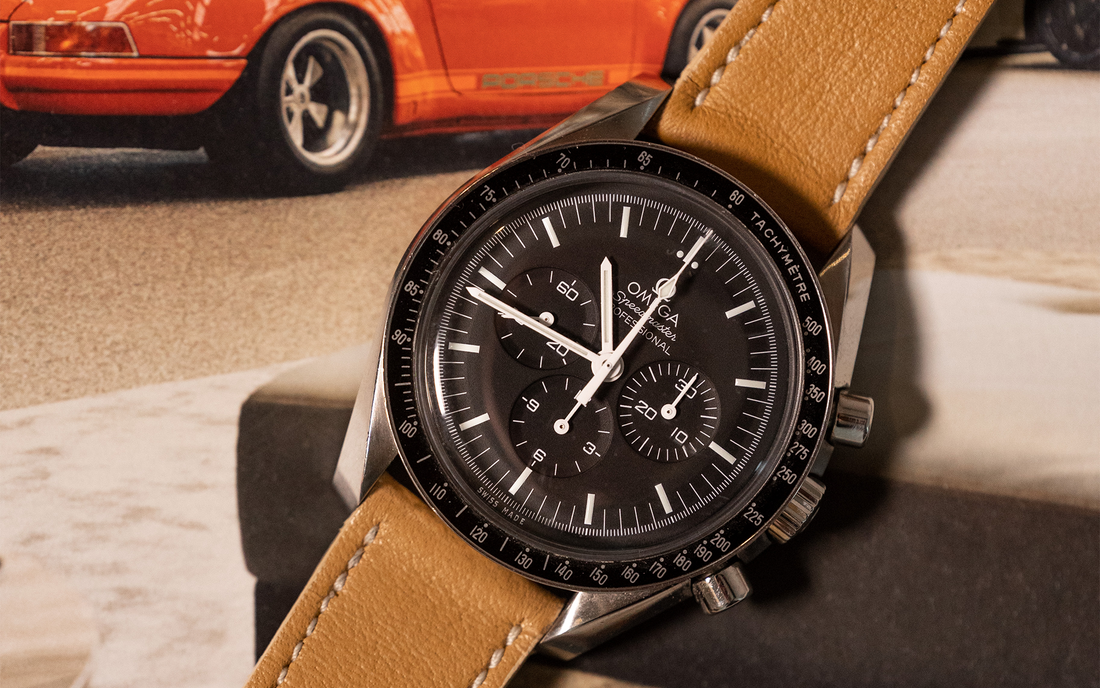
The Evolution of the Omega Speedmaster: From the Racetrack to the Moon
shares
The Omega Speedmaster is one of the most famous and important watches in the history of watchmaking. Originally conceived as a sports and racing chronograph, the Speedmaster has evolved over the years and eventually became the first watch on the moon. In this article, we look at the evolution of the Omega Speedmaster, from its humble beginnings to its place in space history.
- The beginnings of the Omega Speedmaster:
The Omega Speedmaster was first introduced in 1957 and was designed as a sports and racing chronograph. It was the first watch to have a tachymeter scale on the bezel instead of the dial, allowing for easier and quicker reading of speeds. This innovative design quickly made the Speedmaster a popular choice for racers and motorsport enthusiasts.

- The Speedmaster and space travel:
The Omega Speedmaster achieved world fame when it was selected by NASA as the official watch for manned space missions in 1965. The Speedmaster survived a series of rigorous tests and was eventually recognized as the only watch able to withstand the extreme conditions of space. The Speedmaster was present on all six moon landings and became known as the "Moonwatch" after it was worn by Buzz Aldrin during the Apollo 11 mission in 1969.

- The different models of the Omega Speedmaster:
Over the years, Omega has introduced different models and variations of the Speedmaster. Some of the best-known models are the Speedmaster Professional, the Speedmaster Reduced, and the Speedmaster Racing. In addition, Omega has also released limited editions and special editions that commemorate significant space missions or anniversaries, such as the Apollo-Soyuz, the Silver Snoopy or the Speedmaster 50th Anniversary Edition.

- The Speedmaster today:
Today, the Omega Speedmaster remains a symbol of precision, reliability and adventure. The Speedmaster is still a staple of the Omega collection and is treasured by watch lovers and space enthusiasts alike. Omega has continued to introduce new models and innovations, such as the use of advanced materials such as ceramic or the introduction of Co-Axial calibers.
Conclusion:
The Omega Speedmaster has constantly evolved since its introduction in 1957 and today it is a true symbol of technical excellence and a spirit of adventure. From the race track to the moon, the Speedmaster has witnessed many milestones in watch and space history and remains a fascinating timepiece for watch enthusiasts around the world. The Speedmaster is a perfect example of how a watch can serve both as a precise timekeeping instrument and as a witness to significant historical events.
